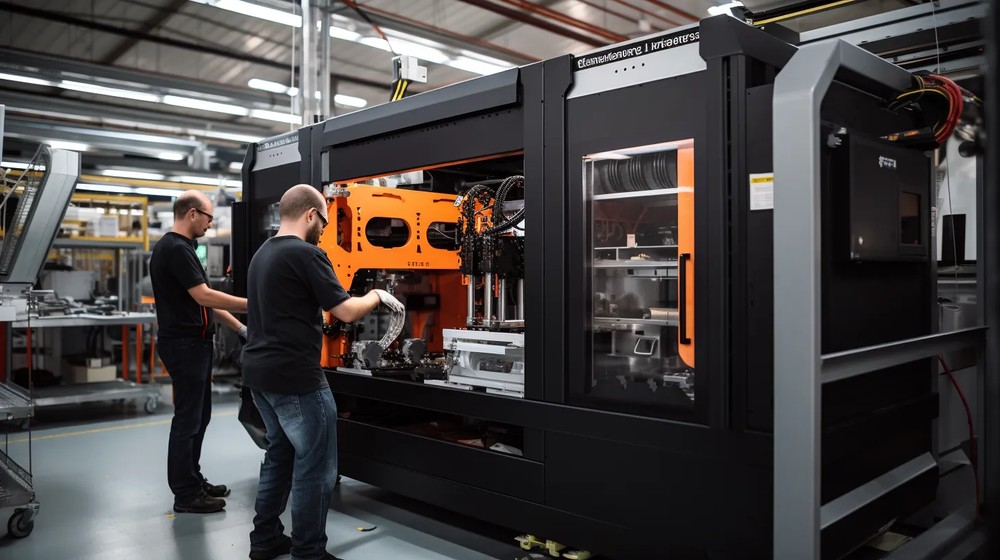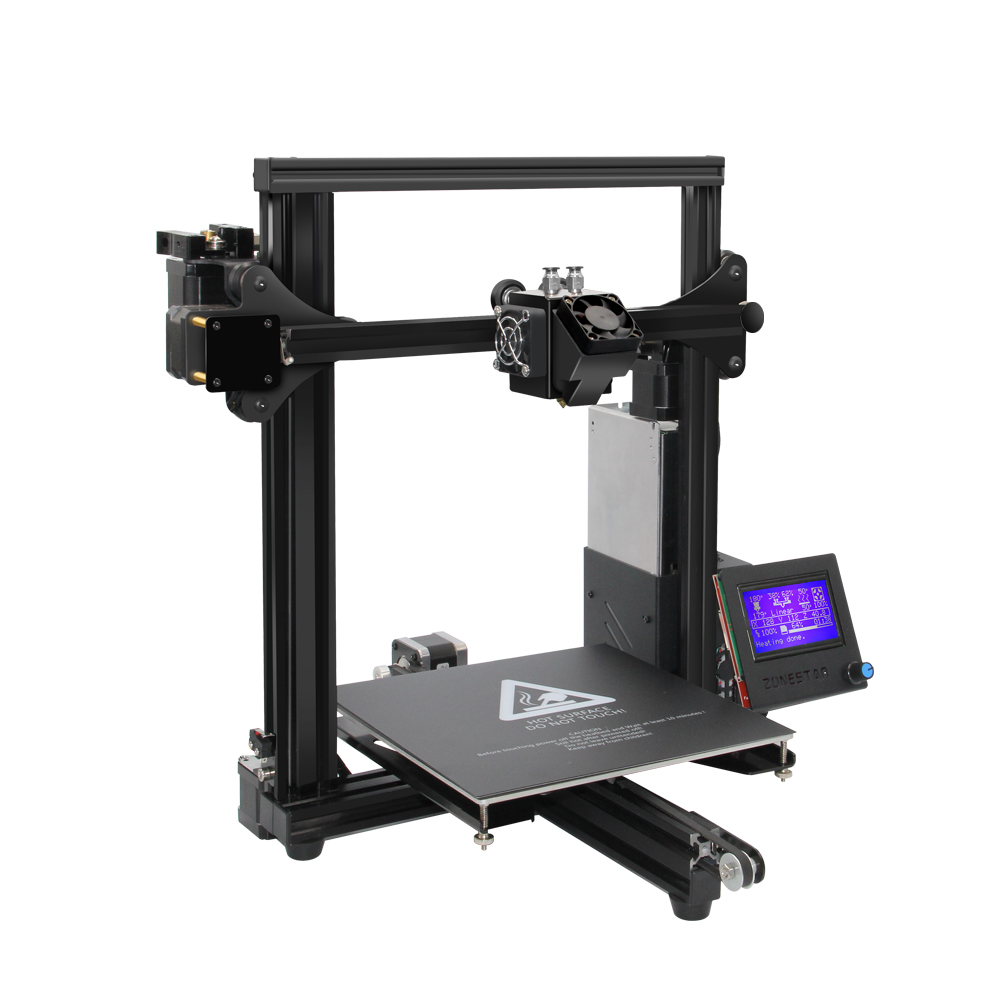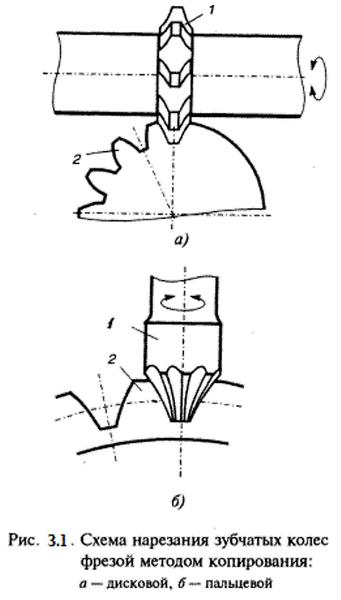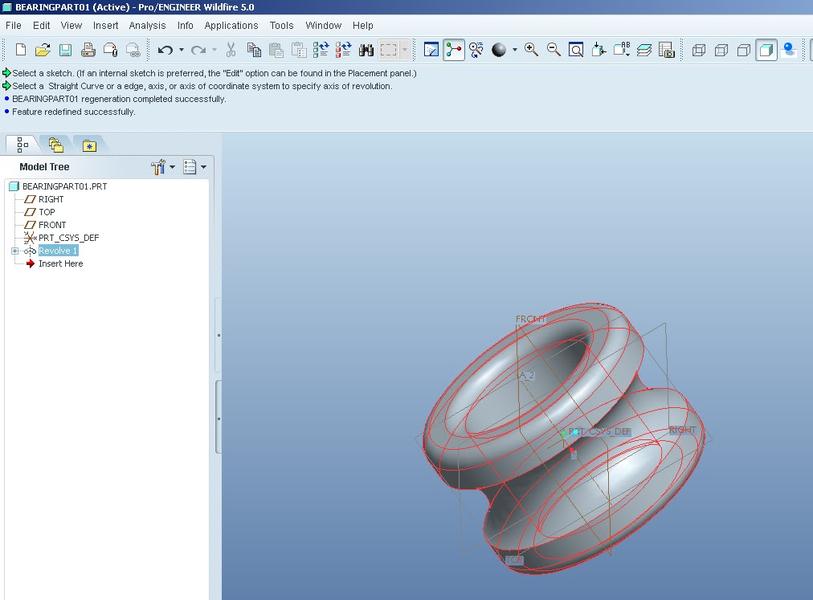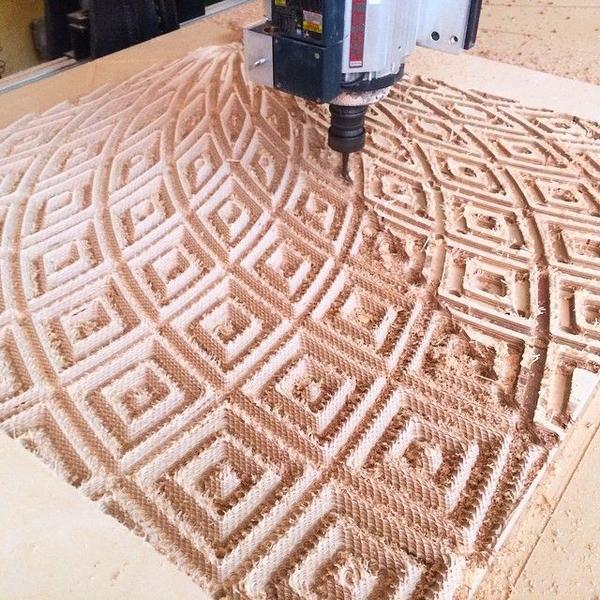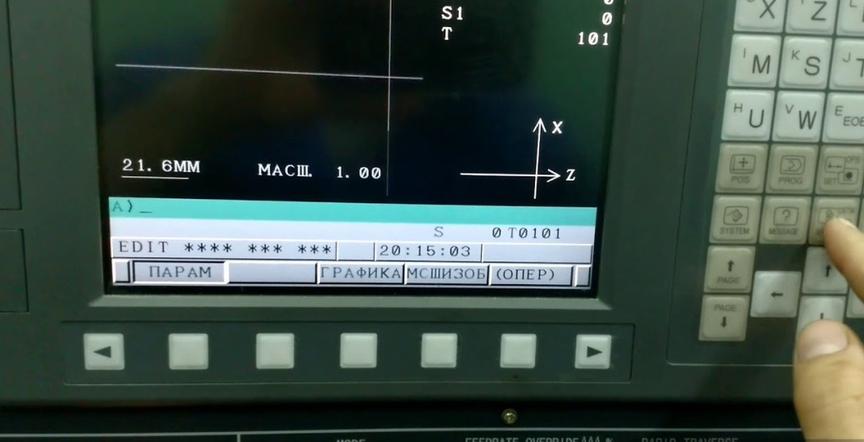Best 3D printers with a large print area
In a world where innovation is the cornerstone of technological progress, 3D printing plays a key role. Among the multitude of available 3D printers, those with a large printing area stand out for their ability to bring grand ideas to reality. In this article, we will explore all the nuances and advantages of 3D printers with large printing areas and discuss various aspects that make them worthy investments for both private individuals and industrial enterprises.
Contents:
- 3D Printers with Large Printing Area
- Diving Deeper: Features of 3D Printers with Large Printing Area
- Market Leaders: Leading Brands and Models
- Industrial Applications of 3D Printers with Large Printing Area
- Personal Projects: Unleashing Creative Potential
- Cost Factor: Investment and Return
- Technical Maintenance and Keeping in Working Condition
- Conclusion
3D Printers with Large Printing Area
Definition of a Large Printing Area
When it comes to 3D printing, the term "large printing area" refers to the build volume or space available for printing on a 3D printer. This space is usually measured in length, width, and height and is often represented in cubic inches or millimeters. A 3D printer with a large printing area essentially provides a gateway to creating large-sized objects that can accurately replicate real-life items on a significant and useful scale. The larger the printing area, the more extensive and ambitious projects can be realized. Whether you want to create a detailed architectural model, custom furniture, automotive parts, or large artistic sculptures, a 3D printer with a large printing area offers the opportunity for your creativity and technical skills to flourish.
Benefits of a Large Printing Area
The benefits of a large printing area in a 3D printer are manifold. Here are some of the main advantages:
- Manufacturing Large-Scale Models: A large printing area allows for the creation of large-scale models, particularly useful in professional organizations such as architectural firms, design studios, and manufacturing workshops. Such large-scale models serve as tangible representations of concepts, allowing for better visualization and communication of ideas.
- Reducing Assembly Volume: A large printing area enables the printing of larger parts, reducing the need for assembling smaller pieces. This not only saves time but also leads to the creation of stronger and more durable models, as the number of joints and seams is reduced.
- Industrial Application: In the industry, a large printing area is often a necessity. In sectors such as aerospace, automotive, and medical, large custom components are frequently required, and having a 3D printer with a large printing area significantly speeds up the process of creating prototypes and production.
- Personalization: A large printing area offers more opportunities for individual approach and experimentation. Whether it's creating custom furniture or unique works of art, the possibilities are significantly expanded.
Features to Consider in Large Format Printing
Despite all the advantages, there are some points to consider when choosing a 3D printer with a large printing area:
- Printing Area: Large printing areas require larger printers. This means that more space must be allocated for the printer itself, which can be a limiting factor in a tight workspace.
- Cost: As a rule, 3D printers with a large printing area have a higher price. Initial investments include not only the cost of the printer but also the cost of materials, which will be higher due to the larger scale of printing.
- Operating Experience: Operating a 3D printer with a large printing area may require a higher level of skill. Settings and calibrations needed for large-scale printing can be more complex, and often require more extensive training.
- Technical Maintenance: Large printers may require more thorough maintenance and care to keep them in working condition over a long period. This includes cleaning, calibration, and sometimes repair, which can be more costly given the size and complexity of the printer.
Taking these factors into account, along with the advantages, will help make a well-informed decision when choosing a 3D printing area with a large printing area.
Diving Deeper: Features of 3D Printers with Large Printing Area
Precision and Accuracy
When it comes to 3D printers with a large printing area, one of their distinguishing features is their precision and accuracy. The ability to accurately reproduce detailed structures on a large scale is indispensable in the professional and industrial sphere. Here's why precision and accuracy are crucial:
- Detailed Reproduction: High precision and accuracy ensure the exact reproduction of all the smallest details of the design. This is especially important in areas such as aerospace, automotive, and medical industry, where even the slightest deviation can lead to serious consequences.
- Consistency: Consistency in printing on a large area indicates the precision and accuracy of the printer. This ensures that each part of the model will be manufactured according to the same standard, regardless of its position on the printing bed.
- Reducing Waste: Accurate printing minimizes the likelihood of errors, which in turn reduces waste. This is especially important for 3D printing with a large printing area, where the cost of materials is higher due to the scale of printing.
- Professional Requirements: In a professional environment, the stakes are higher, and the opportunities for error are minimal. A high level of precision and accuracy is often a requirement, not a choice.
Material Compatibility
Material compatibility in 3D printers with a large printing area is another characteristic that cannot be overlooked. Here's why it's important:
- Variety of Materials: The ability to work with various materials expands the boundaries of what is possible. Common materials include plastics like PLA and ABS, but modern 3D printers can also process materials like nylon, composite materials made from carbon fiber, and even metals.
- Properties of Materials: Different materials possess different properties. Some materials are known for their strength, others for their flexibility, and others for their resistance to high temperatures. Material compatibility allows for the creation of not only large objects but also functional ones suited for specific purposes.
- Economic Efficiency: Material compatibility can also lead to cost-effectiveness. The ability to use different types of materials allows for cost optimization, especially in the professional field where budget matters.
Speed and Efficiency
When implementing large-scale printing projects, time indeed plays a decisive role. The speed and efficiency of these printers are crucial for meeting deadlines without compromising quality. Here is more detailed information on why speed and efficiency are critical:
- Time Saving: Higher printing speed significantly reduces production time, which is a key factor in the industrial and professional sphere. Accelerated production can lead to shorter project implementation times and faster delivery of products to customers.
- Optimized Workflow: Printing efficiency also leads to an optimized workflow. If a 3D printer can create high-quality models in less time, it allows for quicker iterations and more time for refinement, resulting in a higher quality final product.
- Economic Efficiency: Saving time translates to saving money, especially in the professional sphere. Moreover, efficient printing means less waste of materials, which also contributes to improved economic efficiency.
- Meeting Deadlines: In professional activities, meeting deadlines is critically important. A fast and efficient 3D printer plays a vital role in adhering to project schedules and meeting client needs.
The combination of precision, material compatibility, and speed in 3D printers with large printing areas makes them an attractive choice for serious hobbyists, professionals, and industrialists alike.
Market Leaders: Leading Brands and Models
An overview of some of the leading brands and models in the field of 3D printing with a large printing area, as well as reasons why they are most popular among professionals.
- Printing Area400x300x300 mm;
- Supported SoftwareWindows; Linux; Mac OS; OSX;
- Supported File FormatsSTL; OBJ; AMF;
- Printing Resolution0.04 mm;
- Movement Speed200 mm/s;
- Power Requirements110 ~ 220V 300W;
- File FormatGCO; GCode;
- Speed180 mm/s;
- Number of Printing Heads2;
- Materials UsedPEEK; PLA; ABS; Carbon Fiber; Wood; Nylon; PC; PTEG; HIPS; PP; Flexible; TPU; PVA; PEEK; (any materials with a melting temperature up to 420 degrees);
- Filament Diameter1.75 mm;
- Nozzle Diameter, mm0.4 mm (0.4/0.5/0.6/0.8/1.0 - optional);
Features:
- High performance and capability to print materials such as PEEK, PEEK-CF, PPS, PLA, ABS, PC, nylon, carbon fiber, and flexible materials, thanks to high heat resistance with a hot end temperature up to 420°C, hot layer 140°C, and hot chamber 70°C.
- Large build volume of 40 × 30 × 30 cm, fully metal body, power failure backup, easy print resumption, filament feed sensor, glass-ceramic work platform for even print base, simple and intuitive touch screen control, direct drive extruder, automatic alignment and platform adjustment, fully enclosed build area.
- High precision (12.7 μm, XY) and speed (120 mm/s) with a fully steel chassis for stability.
Pros:
- Capability to produce models based on high-strength, biocompatible, and conductive plastics in addition to standard threads of various brands.
- Weight, kg75;
- Power Supply220 V±15% 50 Hz (option 110 V±15% 60 Hz);
- Power Consumption1.3 kW;
- File Formats*.gcode, *.plgx, *.stl, *.obj, *.3ds, *.amf;
- Dimensions, mm650x605x1000 mm;
- Body MaterialAluminum [composite];
- SoftwareWindows XP, Windows 7, Windows 8 and above;
- Country of ManufactureRussia;
- Number of Extruders1;
- GuidesXY: Rail, steel; Z: Cylindrical, steel;
- Printing Area360x360x610 mm;
- FrameSteel, 3 mm;
- Chamber Temperatureup to 90°C;
- Print Bed Temperature150°C;
- Positioning AccuracyXY: 11 μm; Z: 1.25 μm;
- ExtruderDirect;
- Number of Printing Heads2;
- Materials UsedABS, ASA, FLEX, Flex (TPE), Flex (TPU), HIPS, Nylon, PA, PC, PETG, PLA, PMMA, PP, PPS, PS, PVA, RUBBER, SBS, TPU, WOOD (wooden), Metallic;
- Layer Thickness From10 μm (0.01 mm);
- Filament Diameter1.75±0.1 mm;
- Nozzle Diameter, mm0.5;
- InterfacesEthernet, USB Flash, Wi-Fi;
- Printing Speedup to 130 cm³/h;
- Printing Temperature410°C;
- Printing TechnologyFFF;
- Additional FeaturesVentilation system, plastic feed control, built-in drying mode, platform control, remote control;
- Table TypeHeated; Aluminum, glass;
Features:
- Dimensions of 650 x 590 x 1000 mm, weight 75 kg, composite aluminum body, heat-resistant plastic doors for easy access to the XY portal.
- Supports a wide range of materials, including ABS, PLA, HIPS, ULTRAN630, ULTRAN6130, ASA, ABS/PC, PET, PC, FRICTION, FLEX, CAST, RELAX, ETERNAL, PETG, CERAMO, SBS, NYLON, and PEEK. Equipped with automatic bed leveling, one extruder, and steel guides for XY and Z axes.
- Includes a spare nozzle, a 1.8 m power cord, a 250 ml bottle of glue for trial printing, and engineering fire-resistant plastic based on ABS with carbon fiber for trial printing.
- Capability of simultaneous printing with two materials in an area of 360 x 360 x 610 mm with a maximum extruder temperature of 410°C, facilitating the creation of large-scale products using high-melting engineering materials for 3D printing.
- Power Supply220 V
- Power ConsumptionNot more than: 600 W
- File FormatsSTL, OBJ
- Autonomous PrintingSupported
- VentilationForced convection system: supported
- Enclosed CabinetYes
- Maximum Extruder Temperature300/410 °C
- GuidesProfile rail guides X, Y
- Power SupplyPower backup system: supported
- Heated Print BedYes
- Movement SpeedMax. Not less than 150 mm/s
- Print Bed TemperatureMax. Not less than: 150 °C
- SpecializationDesign; Education; Souvenir Industry; Automotive Industry; Manufacturing; Architecture; Advertising; Home Use
- Materials UsedPLA, ABS, SBS, HIPS, PETg, PP, PC, NY, PU, Flex, Ultran, carbon-filled versions
- Layer Thickness From10 μm
- Filament Diameter1.75/2.85 mm
- Nozzle Diameter, mmFrom 20 μm
- DisplayColor, IPS display 3.5" 480x320 dpi
- InterfacesIEEE 802.11 (Wi-Fi); USB-B; USB-Flash, SD-Card, Micro-SD
- CameraBuilt-in 2 MP (optional)
- Working Chamber400x400x640 mm
- Positioning Accuracy, XY μm, not worse than12.5
- Auto Alignment of PortalAutomatic table alignment: provided
- Material of Work TableAluminum, glass with magnetic fastenings
- Drive MechanicsCARTESIAN
- Positioning Accuracy Z-Axis, μmNot less than: 10/1.25
- Large printing area: Maestro Grand has a significant print volume of 400x400x640 millimeters, which is sufficient for many tasks faced by users of FDM devices.
- Construction: It has a steel frame and metal body, providing stability and control over print quality.
- High-precision movement: Rail guides ensure precise head movement and maintain high vertical accuracy.
- Advanced technologies: It incorporates Trinamic's stepper motor control technologies such as microPlayer, stallGuard2, dcStep, and coolStep, which help to reduce system noise and resonances, perform kinematic testing of the device, control and compensate for missed motor steps, and reduce power consumption.
- Automatic calibration: Provides practical automatic calibration of the table and print head.
- Minimum Track Width70 μm
- Laser Power500 W x 2 / 1000 W x 2
- Print Accuracy0.05-0.2 mm
- Materials UsedStainless steel, cobalt-chrome alloy, hastelloy, titanium alloy, nickel-based alloy, tool steel, aluminum alloy, and some refractory metals such as tungsten and tantalum.
- Layer Thickness From20 μm
- Scanning Speed≤10000mm/s
- DensityNearly 100%
- Working Chamber460x460x1500 mm
- Additional FeaturesBuilt-in sealing, automatic oxygen content control, re-purification, and collection efficiency ≥ 99%
- Oxygen Concentration Maintenance Level in Working Chamber≤100 PPM
- Capability to produce a large volume of products in a short time.
- Suitable for production of any scale.
- High laser power.
- Fully sealed housing.
- The thinnest layer thickness in the HBD line.
- Automatic oxygen level control in the chamber.
- Steel housing ensures exceptional equipment reliability, long service life, and the highest level of production safety.
- Simple setup even for beginner operators.
- Operating SystemsWindows, Linux
- File Formats.stl
- Dimensions, mm1800x1600x1950
- Body Materialsteel 345, steel 245
- SoftwareRepetirHost
- Weight650
- Number of Extruders1
- MaterialABS, ASA, PC, PLA, PetG, CERAMO, PLA-based composites, FLEX, RUBBER, KAUCHUK ELASTIK, HIPS, PVA, CAST, WAX3D, TOTAL-TPU-CARBON, TOTAL-TPU-GLASS, TOTAL-SAN-AIR, TOTAL-ABS-GLASS, TOTAL-ABS-GLASS-TITAN, Nylon
- PrintingFDM
- Heated Bedyes
- Print Bed Temperatureup to 130°C (basic configuration), without heating (vacuum)
- Extruder Temperatureup to 310°C
- Positioning AccuracyXY: 6.25 μm, Z: 1.6 μm
- Power Supply Requirements220-240V / 350-400V, 2-3.5 kW
- Layer Thickness From50 μm
- Filament Diameter1.75; 2.85
- Nozzle Diameter, mm0.4-2
- DisplayTouchscreen 17"
- InterfacesUSB 2.0, LAN
- PlatformGlass
- Working Chamber1010x1010x1010 mm
- Maximum Load on Table212 kg
- Printing Speed (default)100 mm/h
- Printing Technology: Fused Deposition Modeling (FDM).
- Build Volume: 1200x1000x1000 mm7.
- Capability to print large objects: At a relatively low cost of the printer.
- Filament Feeding: Ability to feed from four spools of 2 kg each.
- Extrusion Speed: up to 6 kg in 24 hours.
- Dual Extruder: Printing with two filaments with a melting temperature of up to 350°C.
- Printing Platform: Quartz glass, heated up to 130°C.
- UPS and Observation Chamber: Ensures stability of printing.
- High-Performance Printers: With a print chamber volume of more than one cubic meter, they print volumetric objects using FFF technology by layering molten polymer. TotalZ AnyForm LPRO series printers also print with strong engineering plastics, allowing the creation of not only prototypes and models, but also functional parts with the required flexibility, rigidity, wear resistance, and heat resistance depending on the filament used for printing the part. They print polymers with a working temperature up to 130 degrees Celsius and a tensile strength of more than 50 megapascals.
Each of these 3D printers has its own set of characteristics, allowing its use for various purposes, whether it be industrial, professional, or personal application. Some have higher temperature tolerances, others provide larger build volumes, and others are equipped with advanced technologies ensuring print accuracy and ease of use.
Industrial Applications of 3D Printers with Large Printing Area
The emergence of 3D printers with a large printing area has opened the way to numerous industrial applications. These printers are no longer limited to creating small prototypes but have become important in the production of large-scale parts and models in various industries. Let's look at some industries where these printers make a significant impact:
Automotive Industry
- Prototyping: The automotive industry has always been at the forefront of using 3D printing technology for creating prototypes. 3D printers with a large printing area allow the creation of full-scale car parts models, facilitating better visualization and testing.
- Custom Part Manufacturing: 3D printers with a large printing area can efficiently and accurately produce custom parts for vintage or high-performance cars.
- Tooling and Fixtures: Creating specialized tools and fixtures for assembly lines is another area where these printers provide invaluable help.
Aerospace Industry
- Component Manufacturing: In the aerospace industry, lightweight but strong components are required. 3D printers with a large printing area allow for the creation of large components, reducing the need to join smaller parts and thus maintaining the integrity of the structure.
- Prototyping: As in the automotive sector, prototyping plays an important role in the aerospace industry for testing designs before they go into production.
- Custom Tooling: Specialized tools and fixtures necessary for assembly and maintenance can also be rapidly and cost-effectively produced.
Healthcare
- Custom Prosthetics and Orthotics: Creating individual prosthetics and orthotics is one of the revolutionary applications of 3D printers with a large printing area in healthcare. Each part can be tailored to the exact dimensions of a person, ensuring a better fit and comfort.
- Medical Models: Surgeons and medical professionals can use high-precision 3D models of organs for planning and training before surgeries. The large printing area allows for life-sized models, providing better understanding and realistic training.
- Custom Surgical Instruments: Specialized surgical tools and fixtures can also be created to meet the unique requirements of specific surgical operations.
Construction Industry
- Architectural Models: 3D printers with a large printing area allow architects and designers to create detailed large-scale models of buildings and landscapes, facilitating better visualization and presentation to clients.
- Custom Fixtures: Custom fasteners and fittings needed for construction can be made on demand, reducing lead time and costs.
Consumer Goods Industry
- Prototyping: Before starting mass production, prototype samples of consumer goods can be created for testing and feedback. The large printing area allows for prototypes of large products, such as furniture.
- Customization: Offering personalized products has become one of the key moments in the consumer goods industry. 3D printers with a large printing area allow for the creation of personalized items on a large scale.
Entertainment and Arts
- Props and Scenery: The entertainment industry can use 3D printers with a large printing area to create realistic props and decorations for movies and theater productions.
- Sculptures and Installations: Artists can expand the boundaries of creativity by creating large sculptures and installations with these printers.
The use of 3D printers with a large printing area is expected to grow as industries discover their capabilities for increasing efficiency, reducing costs, and stimulating innovation.
Personal Projects: Unleashing Creative Potential
The realm of 3D printing is not limited to industrial sectors. With the emergence of more convenient and accessible 3D printers with a large printing area, individual enthusiasts and hobbyists are finding a platform to unleash their creative abilities. Here's how:
- Creating Individual Projects: 3D printers with a large printing area allow for the creation of individual projects on a huge scale, whether it be furniture, home decor items, or even outdoor installations. The ability to bring one's ideas to life in a tangible form offers new possibilities and brings satisfaction.
- Educational Projects: Educators, students, and enthusiasts use these printers for educational projects, allowing them to explore, master, and teach complex concepts in a more engaging and interactive form.
- Community Engagement: Communities have formed around this technology, providing people with the opportunity to exchange ideas, collaborate on projects, and help each other improve 3D printing skills. Online forums, local meetups, and maker spaces promote a culture of collaborative learning and creativity.
Cost Factor: Investments and Returns
Investing in a 3D printer with a large printing area is not an easy decision. Here's an analysis of the cost-benefit ratio it can bring to your projects:
- Initial Investments: Initial costs include the price of the printer, materials, and necessary accessories. These are significant investments but the opportunities they open up justify themselves.
- Operational Costs: Ongoing expenses include electricity, printing materials, and maintenance. Over time, these costs can increase, but compared to the costs of acquiring or outsourcing large-scale models or custom items, this can be a cost-effective solution.
- Return on Investment: The return on investment can be reflected in time savings, the ability to create custom items, and even potential income from the sale of printed items or 3D printing services.
Technical Maintenance and Keeping in Working Condition
Regular maintenance and care are required to ensure the longevity and stable operation of a 3D printer with a large printing area. Here's what is needed:
- Cleaning: Regular cleaning of the printer from dust, debris, and any material residues is very important for its uninterrupted operation. In particular, regular cleaning of the print bed and extruder is required for optimal printer operation.
- Calibration: Calibrating the printer to ensure it is level and the extruder is at the correct height is necessary for accurate printing. Recalibration may be required over time or after moving the printer.
- Lubrication: Moving parts such as rods and bearings need to be lubricated to ensure smooth movement and prevent wear.
- Firmware Update: Updating the printer's firmware is necessary to take advantage of all the improvements and fixes offered by the manufacturer.
- Regular Checks: Conducting regular checks for loose bolts, worn parts, and other issues will help identify problems at an early stage before they worsen.
- Community Support: Joining a community of 3D printing enthusiasts can be helpful for maintenance tips and troubleshooting common problems.
If you take the time and effort to maintain it, the 3D printer will serve as a platform for your creativity and projects for many years.
Conclusion
3D printers with a large printing area are not just a tool, but a gateway to endless creativity and innovation. Investing in such a printer, both for professional and personal use, can significantly increase the scale and quality of your projects.

